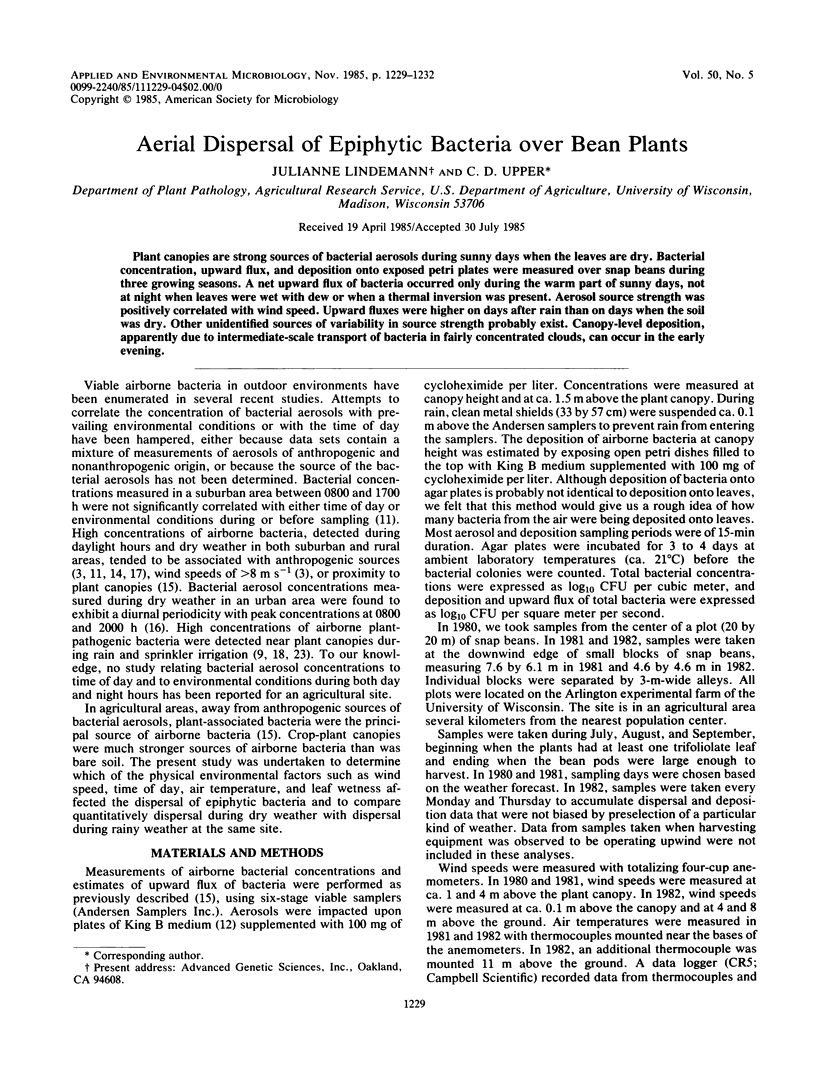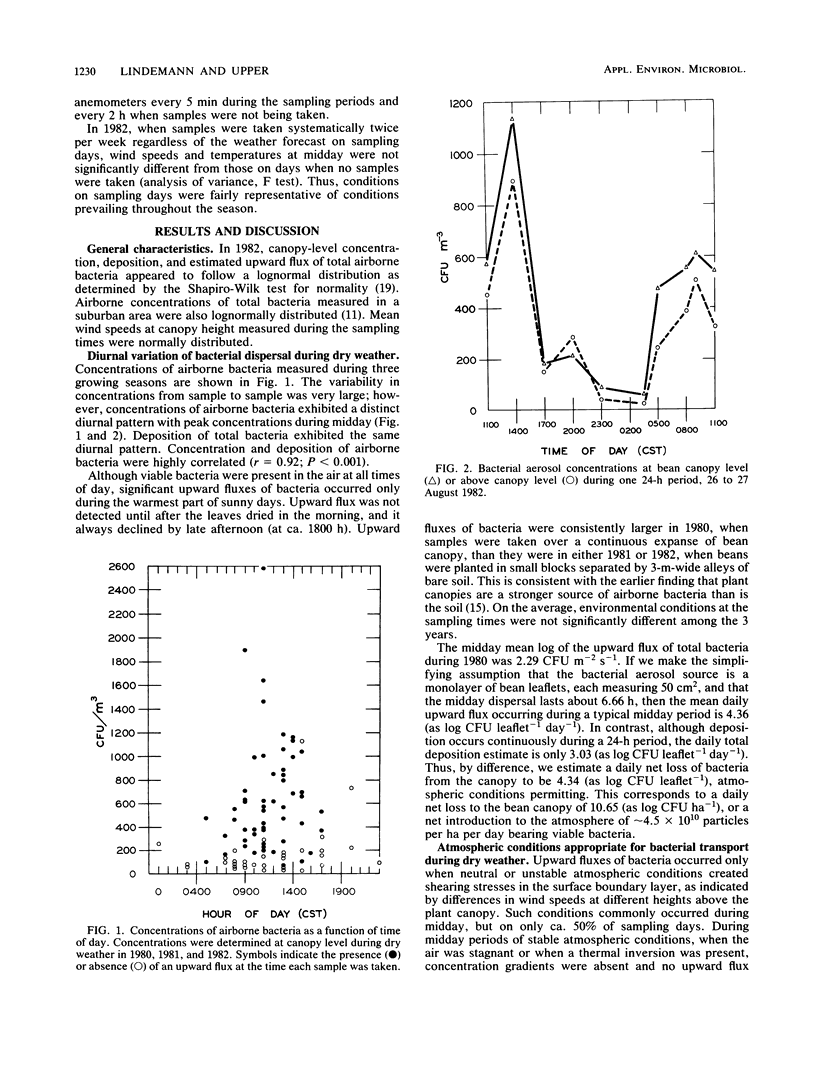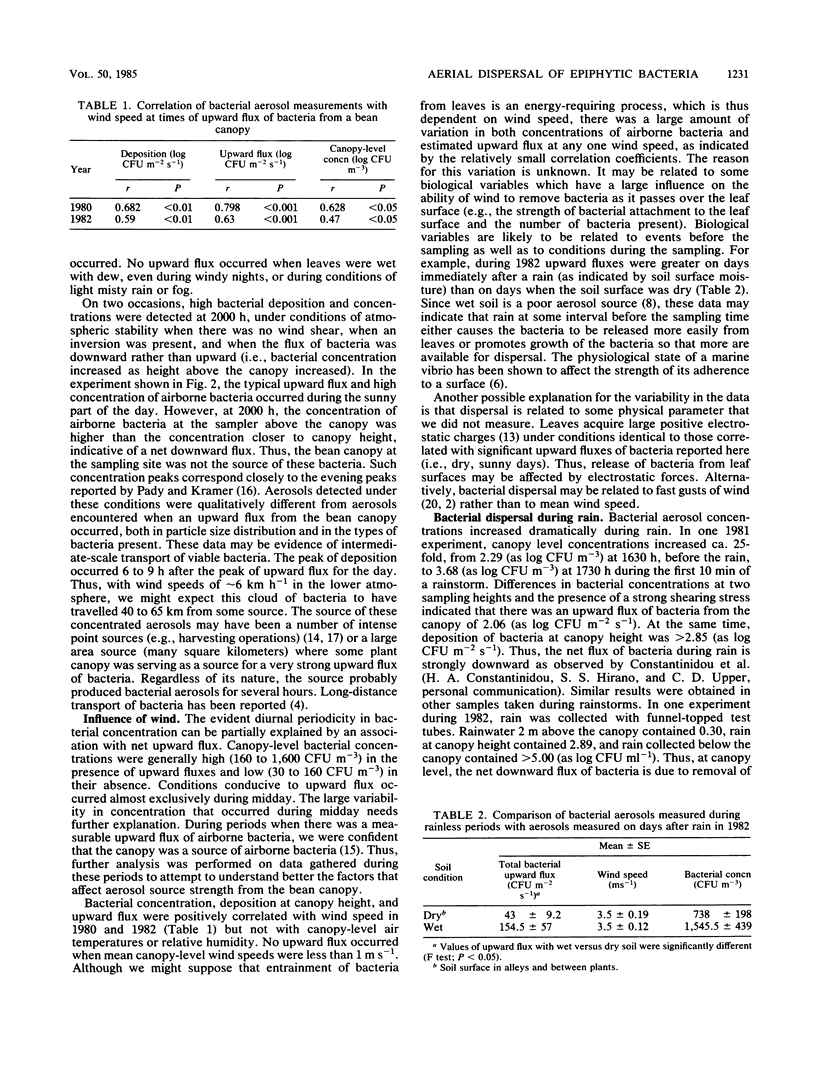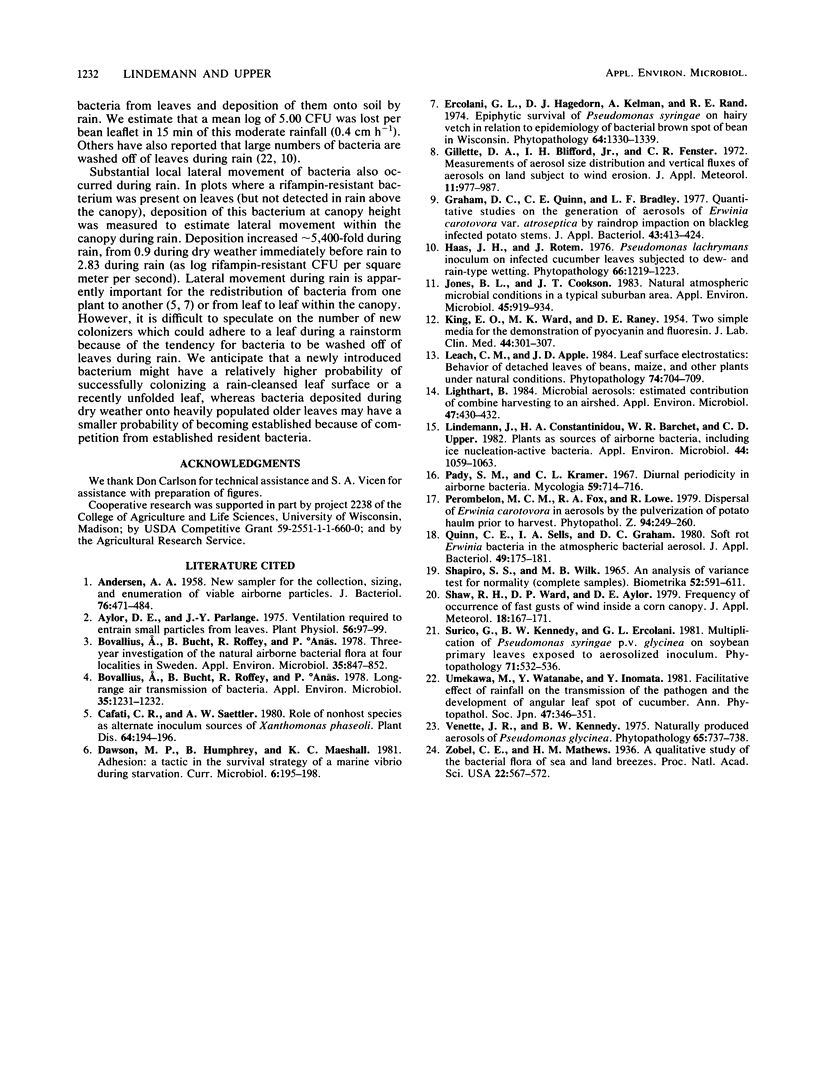Abstract
Plant canopies are strong sources of bacterial aerosols during sunny days when the leaves are dry. Bacterial concentration, upward flux, and deposition onto exposed petri plates were measured over snap beans during three growing seasons. A net upward flux of bacteria occurred only during the warm part of sunny days, not at night when leaves were wet with dew or when a thermal inversion was present. Aerosol source strength was positively correlated with wind speed. Upward fluxes were higher on days after rain than on days when the soil was dry. Other unidentified sources of variability in source strength probably exist. Canopy-level deposition, apparently due to intermediate-scale transport of bacteria in fairly concentrated clouds, can occur in the early evening.
Full text
PDF



Selected References
These references are in PubMed. This may not be the complete list of references from this article.
- ANDERSEN A. A. New sampler for the collection, sizing, and enumeration of viable airborne particles. J Bacteriol. 1958 Nov;76(5):471–484. doi: 10.1128/jb.76.5.471-484.1958. [DOI] [PMC free article] [PubMed] [Google Scholar]
- Aylor D. E., Parlange J. Y. Ventilation required to entrain small particles from leaves. Plant Physiol. 1975 Jul;56(1):97–99. doi: 10.1104/pp.56.1.97. [DOI] [PMC free article] [PubMed] [Google Scholar]
- Bovallius A., Bucht B., Roffey R., Anäs P. Long-range air transmission of bacteria. Appl Environ Microbiol. 1978 Jun;35(6):1231–1232. doi: 10.1128/aem.35.6.1231-1232.1978. [DOI] [PMC free article] [PubMed] [Google Scholar]
- Bovallius A., Bucht B., Roffey R., Anäs P. Three-year investigation of the natural airborne bacterial flora at four localities in sweden. Appl Environ Microbiol. 1978 May;35(5):847–852. doi: 10.1128/aem.35.5.847-852.1978. [DOI] [PMC free article] [PubMed] [Google Scholar]
- Jones B. L., Cookson J. T. Natural atmospheric microbial conditions in a typical suburban area. Appl Environ Microbiol. 1983 Mar;45(3):919–934. doi: 10.1128/aem.45.3.919-934.1983. [DOI] [PMC free article] [PubMed] [Google Scholar]
- KING E. O., WARD M. K., RANEY D. E. Two simple media for the demonstration of pyocyanin and fluorescin. J Lab Clin Med. 1954 Aug;44(2):301–307. [PubMed] [Google Scholar]
- Lighthart B. Microbial aerosols: estimated contribution of combine harvesting to an airshed. Appl Environ Microbiol. 1984 Feb;47(2):430–432. doi: 10.1128/aem.47.2.430-432.1984. [DOI] [PMC free article] [PubMed] [Google Scholar]
- Lindemann J., Constantinidou H. A., Barchet W. R., Upper C. D. Plants as sources of airborne bacteria, including ice nucleation-active bacteria. Appl Environ Microbiol. 1982 Nov;44(5):1059–1063. doi: 10.1128/aem.44.5.1059-1063.1982. [DOI] [PMC free article] [PubMed] [Google Scholar]
- Little J. B., Kennedy A. R., McGandy R. B. Lung cancer induced in hamsters by low doses of alpha radiation from polonium-210. Science. 1975 May 16;188(4189):737–738. doi: 10.1126/science.1124396. [DOI] [PubMed] [Google Scholar]
- Pady S. M., Kramer C. L. Diurnal periodicity in airborne bacteria. Mycologia. 1967 Jul-Aug;59(4):714–716. [PubMed] [Google Scholar]
- Zobell C. E., Mathews H. M. A Qualitative Study of the Bacterial Flora of Sea and Land Breezes. Proc Natl Acad Sci U S A. 1936 Oct;22(10):567–572. doi: 10.1073/pnas.22.10.567. [DOI] [PMC free article] [PubMed] [Google Scholar]


